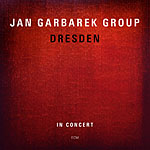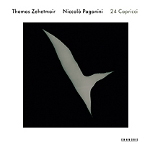Home » Jazz Articles » Bailey's Bundles » The State of ECM Records 2009: Steve Kuhn, Jan Garbarek ...
The State of ECM Records 2009: Steve Kuhn, Jan Garbarek and Thomas Zehetmair
 Steve Kuhn Trio with Joe Lovano
Steve Kuhn Trio with Joe Lovano
Mostly Coltrane
ECM Records
2009
Mostly Coltrane has received much attention from the writers at All About Jazz. Justifiably so because the project fell at the creative intersection of positive manifold influences. Pianist Steve Kuhn has both a history with ECM and John Coltrane, having performed with the saxophonist in early 1960. Kuhn's trio mates, bassist David Finck and drummer Joey Baron were present for Kuhn's Remembering Tomorrow (ECM, 1996) and their familiarity with the pianist is readily evident. And then, there is Joe Lovano, a keenly appropriate tenor saxophonist for such a project.
To be absolutely sure, none of the principles here are their respective counterparts in the classic Coltrane Quartet of pianist McCoy Tyner, bassist Jimmy Garrison, and drummer Elvin Jones. They do not need to be. Coltrane is difficult enough to interpret successfully because of his white-hot creativity and spirituality. The lens needed to view Coltrane in interpretation is one that increases the signal-to-noise ratio in performance. Unpopular as the thought might be, Coltrane toward the end of his life was not merely challenging, he was nearly incomprehensible.
So what must we make of Steve Kuhn's musical impressions of Coltrane? Kuhn's pianism is perfectly refined, with smooth transitions and muted exuberance. He is uniquely restrained in the later Coltrane on "Configuration," "Jimmy's Mode" and "Spiritual." On the latter of these tunes, Lovano coaxes a beautiful tone from his horn, deftly navigating the introduction into the breezy groove established by Finck. Into this breezy groove is thrown Baron's controlled poly-rhythms. Coltrane's exuberance is corrected in such a way to broadly appeal.
The trio provides more traditional support on "Song of Praise," reaching a unique empathy with Lovano, whose tenor carefully respects Coltrane's densely electric thought. The rhythm section briskly walks for Kuhn while he delivers an abstract, impressionistic solo. All the needed elements are here, drama, craftsmanship, thoughtfulness, chops and repertoire to make Mostly Coltrane the most perfect jazz disc released this year.
Visit Steve Kuhn and Joe Lovano on the web.
 Jan Garbarek Group
Jan Garbarek Group
Dresden
ECM Records
2009
If there exists a musical face of ECM, it is Jan Garbarek. The Norwegian tenor and soprano saxophonist has been recording for ECM since the release of Afric Pepperbird in 1970 and has spent the majority of his career with the label, recording under his own leadership and that of others. Almost 40 years of recording make for a large well of experience to choose from when assembling a live performance and Garbarek plumbs his experience deeply.
But that experience has not been without controversy. Is what Garbarek composes and plays jazz? He has certainly played jazz and can swing with the best of them. But recordings like those with the Hilliard Ensemble—Officium (1994, ECM) and Mnemosyne (1999, ECM)—blending the ancient and modern in a super-miscible interface. These recordings illustrate Garbarek's soaring Norwegian soprano tone, the most distinctive soprano saxophone sound since Coltrane blew through his Selmer (and Sidney Bechet before him).
This same plaintive Scandinavian tone introduces Dresden: atmospheric, ethereal, spacial, it partially characterizes the signature ECM sound. Garbarek opens the performance with Lakshminarayana Shankar's "Paper Nut," from the violinist's 1985 recording Song For Everyone, on which Garbarek appeared. "Paper Nut" serves as a microcosm of how the remainder of the recording plays out. Garbarek allows his quartet their respective individualities with ample solo room. Drummer Manu Katche propels the disc from fade-in in a controlled Elvin Jones sort or way. Bassist Yuri Daniels (replacing an ailing Eberhard Weber) buoys Garbarek during his frenetic solo and pianist Rainer Bruninghaus provides a peek at what is to come later.
The concert is presented in a two disc set, each disc showing a different personality. The first is characterized by Garbarek's Norwegian folk sensibilities, melodies that are lengthy, complex and cathartic ("The Tall Tear Trees" and "Tao"). The second presents the band fully warmed up, comfortable and fully emotive. Garbarek blows a warbling soprano in counterpoint to Daniels and Bruninghaus, the latter's playing soft and thoughtful. "Transformations" provides Bruninghaus a shimmering palette on which he paints his Schubert/Liszt motifs. "Once I Dreamt A Tree Upside Down" is Garbarek's "St. Thomas," a high octane synthetic Caribbean vehicle that displays his true jazz chops.
Garbarek and crew extends the language of Weather Report/Return to Forever to its logical zenith on "Maracuja." Katche piles on the poly-rhythms on "Nu Bein,'" propelling it into the arms of Daniels, who lays down the wicked funk. The effect of the entire recital is a recapitulation of that sound that is ECM Records. Garbarek and company capture that in spades on the singing "Voy Cantando." Dresden is a musical high water mark.
Visit Jan Garbarek on the web.
 Thomas Zehetmair
Thomas Zehetmair
Niccolo Paganini, 24 Capricci per Violino Solo, op. 1
ECM Records
2009
ECM's New Music Series has had an outstanding year, if only for Andras Schiff's superbly played Bach Partitas and Rolf Lislevand's inventive re-imagining of 16th century Italian Baroque. The label embarks on the early Romantic repertoire with Paganini's 24 Capricci as realized by Thomas Zehetmair.
Niccolo Paganini (1782-1840) was an immensely talented violinist who was very aware of his immense talent. He was fundamentally a showman, astute in marketing and presentation. He was an originator of the "artist-as-hero" concept, one perfected by his piano counterpart, Franz Liszt, several years later. There would have been no Artur Schnabel, Artur Rubinstein or Vladimir Horowitz without first Paganini.
A centerpiece of Paganini's showmanship was his Opus 1, 24 Capricci for solo violin. These are short virtuoso pieces, based on a common theme, that allowed Paganini to show off his super human playing. He was famous for his use of rapid double stops, harmonics and left hand pizzicato in his concerts. He added dramatics that included his breaking all strings save one and concluding the piece on that single string.
Following a hallowed path previously trod by the likes of Salvatore Accardo, Itzhak Perlman, Shlomo Mintz, and Michael Rabin, Austrian violinist and conductor Thomas Zehetmair spins mercury thread with Paganini's Opus 1, providing a vibrant and liquid reading cast against the backdrop of perfect sonics wrapped in ambient warmth. Scintillating is Zehetmair's attack and tone, expertly navigating the craggy recesses of Paganini's master-show-off-piece.
The quality of Zehetmair's playing coupled with the ECM sonics makes this Paganini Opus 1 one to cherish along with Perlman's EMI recording (1972) and Accardo's on Deutsche Grammophon (1991). The sound is superior to the other recordings being captured at Propstei St. Gerold. The intimate relationship between bow and string, horsehair and gut is palpable in this recording, capturing the visceral punch of Paganini's art.
Visit Thomas Zehetmair on the web.
Tracks and Personnel
Mostly Coltrane
Tracks: Welcome; Song of Praise; Crescent; I Want to Talk About You; The Night Has a Thousand Eyes; Living Space; Central Park West; Like Sonny; With Gratitude; Configuration; Jimmy's Mode; Spiritual; Trance.
Personnel: Steve Kuhn: piano; David Finck: double-bass; Joey Baron: drums; Joe Lovano: tenor saxophone, taragato (12).
Dresden
Tracks: CD1: Paper Nut; The Tall Tear Trees; Heitor; Twelve Moons; Rondo Amoroso; Tao; Milagre Dos Peixes. CD2: There Were Swallows; The Reluctant Saxophonist; Transformations; Once I Dreamt a Tree Upside Down; Fugl; Maracuja; Grooving Out!; Nu Bein; Voy Cantando.
Personnel: Jan Garbarek: soprano and tenor saxophones; Rainer Bruninghaus: piano, keyboards; Yuri Daniels: bass; Manu Katche: drums.
Niccolo Paganini, 24 Capricci per Violino Solo, op. 1
Tracks: 24 Capricci per violino solo, op. 1: No. 1 E major Andante; No. 2 b minor Moderato; No. 3 e minor Sostenuto—Presto; No. 4 C Minor Maestoso; No. 5 A Minor Agitato; No. 6 G Minor Lento; No. 7 A Minor Posato; No. 8 E-flat Major Maestoso; No. 9 E Major Allegretto; No. 10 G Minor Vivace; No. 11 C Major Andante— Presto; No. 12 A-flat Major Allegro; No. 13 B-flat Major Allegro; No. 14 E-flat Major Moderato; No. 15 E Minor Posato; No. 16 G Minor Presto; No. 17 E-flat Major Sostenuto—Andante; No. 18 C Major Corrente—Allegro; No. 19 E-flat Major Lento— Allegro Assai; No. 20 D Major Allegretto; No. 21 A Major Amoroso—Presto; No. 22 F Major Marcato; No. 23 E-flat Major Posato; No. 24 A Minor Tema Con Variazioni.
Personnel: Thomas Zehetmair: violin.
< Previous
Power Patriot
Comments
Tags
For the Love of Jazz
 All About Jazz has been a pillar of jazz since 1995, championing it as an art form and, more importantly, supporting the musicians who create it. Our enduring commitment has made "AAJ" one of the most culturally important websites of its kind, read by hundreds of thousands of fans, musicians and industry figures every month.
All About Jazz has been a pillar of jazz since 1995, championing it as an art form and, more importantly, supporting the musicians who create it. Our enduring commitment has made "AAJ" one of the most culturally important websites of its kind, read by hundreds of thousands of fans, musicians and industry figures every month.


















